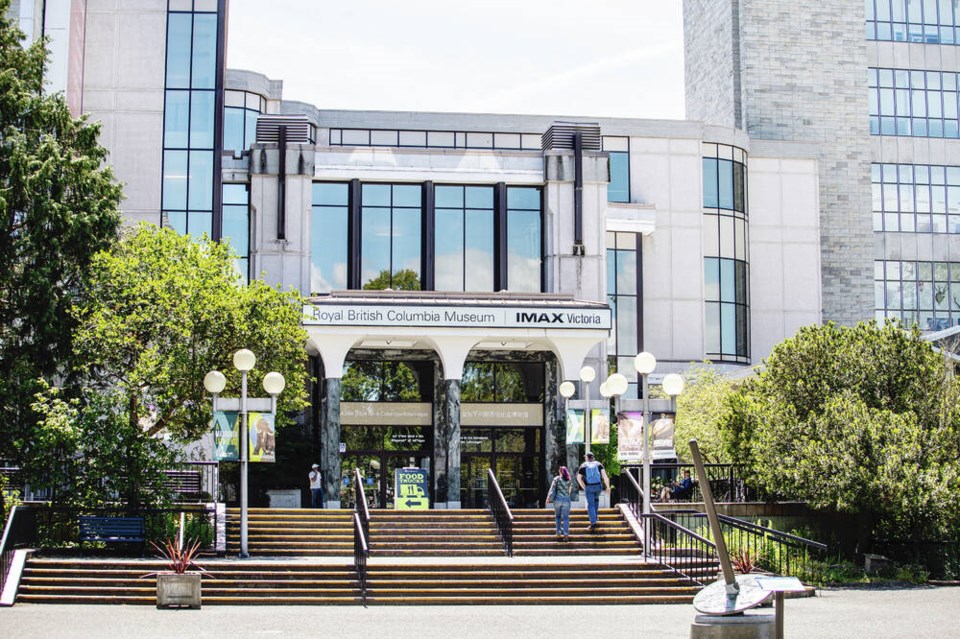Tourists from Texas and Idaho, and schoolkids from across B.C., ambled through the Royal B.C. Museum’s natural history gallery on Thursday, snapping photos in front of the woolly mammoth.
At just $5, admission is about the same price as a latte in the adjacent coffee shop.
The cashier explained the discounted price was owing to the empty third floor that once housed the Old Town exhibit and First Peoples galleries but was stripped in January in a “decolonization” effort.
The future of the half-empty museum was unclear a day after Premier John Horgan announced the province is abandoning its much-maligned $789-million plan to close, tear down and rebuild the museum by 2030.
Horgan’s about face on what the Opposition labelled his “vanity museum project” raises questions about how the 54-year-old institution will rebound after being labelled seismically unsafe and riddled with asbestos.
One possibility is scrapping the model of a single provincial museum in Victoria in favour of smaller museums across B.C.
The premier raised the prospect of a decentralized model which would stimulate rural areas of B.C. and give autonomy to Indigenous communities in showcasing their history.
“Is the location the only location for a museum?” Horgan mused Wednesday. “Will we decentralize, as a response to an earlier question about whether we stimulate more activity in rural areas, and taking some of these artifacts and returning them to the territories where they came from, whether they are Indigenous or otherwise? So I think there is great opportunity to reduce costs as a result of these conversations.”
Bruce Williams, CEO of the Greater Victoria Chamber of Commerce, said while Horgan made the right decision to stop the demolition, he’s worried about the prospect Victoria will lose an anchor attraction.
“We hope any rumblings or rumours of it actually leaving Victoria don’t happen because that would figuratively and literally leave a big hole in our tourist economy,” Williams said. “The tourism sector has just gone through arguably the worst two years in their history. And to then add to that, taking away this anchor tenant from this region would be disastrous.”
If the original tear down and rebuild had gone ahead, the museum planned to take exhibits on the road during its eight-year closure. It’s unclear if the idea for travelling exhibits still stands. Royal B.C. Museum CEO Alicia Dubois initially agreed to an interview, but suddenly cancelled on Thursday.
The Tourism Ministry said in statement that the museum would look at how to best use the space until plans are settled.
“The museum is continuing to offer additional opportunities for British Columbians and visitors to enjoy the galleries, including webinars, travelling and satellite exhibits, and online learning. The museum has also captured the galleries — including Old Town — via 3D tour, to be published online this year.”
The province will go ahead with a $224-million archives and collections building in Colwood, to be completed in 2025. It will eventually house many of the items now stored in the 14-storey Fannin wing of the museum. The museum is also in the process of repatriating items that belong to Indigenous communities.
Tourism Minister Melanie Mark, who is Nisga’a, Gitxsan, Cree and Ojibway, said in May returning a totem pole that belongs to the Nuxalk First Nation is complicated because walls must to be removed to get it out. Nuxalk Hereditary Chief Snuxyaltwa, who also goes by Deric Snow, is suing the Royal B.C. Museum and the B.C. government over the failure to return the pole carved by his great-grandfather, Louis Snow.
Horgan stressed the museum needs a revamp but he’s not in favour of a renovation because it’s unpractical and unsafe to tear down asbestos-filled walls while being open to visitors.
A business plan released on May 25 showed that renovating the building would cost just as much as tearing it down and starting over.
With white drywall closing off access to the third floor, the rest of the space is limited to a random assortment of exhibits on the wartime incarceration of Japanese 91ԭ��s, a multimedia project on COVID social distancing and the unchanged-in-decades natural history exhibit featuring wildlife replicas.
Asked Wednesday how the museum can revitalize considering the third floor gallery has already been stripped bare, Horgan said there are seven million artifacts “and some of them have not seen the light of day for generations. So I don’t believe there’ll be any challenge in filling spaces in the exhibit hall to ensure that there’s a very full and comprehensive flavour all of the history and tapestry of what makes British Columbia so unique.”
The museum will embark on a provincewide consultation to hear British Columbians’ ideas on the museum’s future. Details have not been released.
Geneva Standbridge, a teacher with the B.C. distance learning program EBUS Academy, visited the museum Thursday with about a dozen students and parents. She was happy that Horgan listened to feedback and heard that it was the wrong time for a pricey endeavour.
Victoria student Fred Jennings, 13, said he had been saddened by news that the museum would close for eight years.
“It’s a long time not to have a museum,” he said. Asked about his favourite exhibit, Fred said Old Town. Students like interactive and immersive exhibits, he said. If he had a say on what replaces Old Town, he’d like to see a re-creation of Fort Victoria, a fur trading post of the Hudson’s Bay Company.
Reflecting on the public backlash that led to his climb down, Horgan, a frequent visitor to the museum since childhood, said he couldn’t bear to see a provincial treasure turned into a political football or a “laugh line at a party or soccer pitch.”
He remains “relentlessly optimistic” about the institution’s future, he said.
>>> To comment on this article, write a letter to the editor: [email protected]



